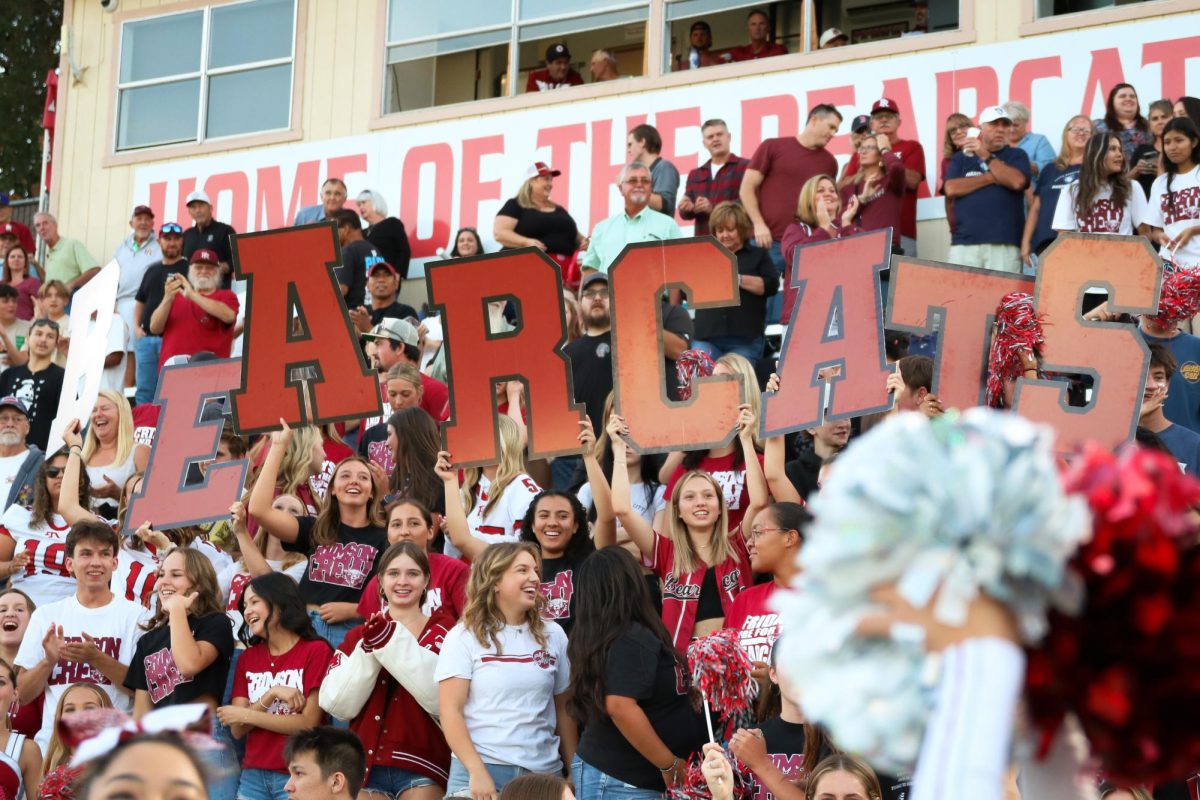Local community health student saves injured boy in rare accident
Senior Britney Powell compressed a gaping wound on the head of a nine year old boy; her fun weekend venture turned into a life or death situation. A Spanish/English language barrier and 15 minute ambulance ride stood in the way of the boy’s survival.
A fallen oak tree limb weighing hundreds of pounds had impaled his head, exposing his brain and causing blood to pour from the wound; the once lively boy was becoming increasingly unresponsive as time droned on. Powell, a second year Community Health student, understood the severity of the situation; she had been accustomed tough medical decisions during her internship at Twin Cities hospital. As she maintained the situation, the skills she had obtained from her training kept her in control.
Powell and a small group of five friends were expecting a casual weekend at Lake Cachuma, but their plans were dashed as Senior Nick Reeves frantically called for help. Quick on her feet, Powell grabbed a medkit they had stowed away, expecting everything but nothing and raced towards the cries with friends Reeves and Senior Jenny Viveros.
“I didn’t know what to expect,” explained Powell. “Nothing was running through my brain except, ‘something’s wrong.’”
Along with a grad school nurse and the friends that had accompanied her to the site of the accident, Powell knew she would do anything to help in this unforeseen situation.
A toppled tree had trapped a 7 month old baby and 9 year old boy inside their tent. The mother had managed to rescue the baby, but the young boy was struck on the head by the fallen branch. The parents had unknowingly made a critical mistake when it came to wound care; they had removed the branch that had went through the boy’s head. In this type of situation, it is better to leave the object in and let the medical professionals handle the removal to avoid a release in pressure or cause additional damage.
“When I had gotten there they had just pulled the branch off of the kid and it was inside his head; when they pulled it off it released all the pressure and it was gushing blood.” said Powell. Most people would have been repelled by the sight of an exposed brain, but the intensity of the situation invigorated Powell more. Every heartbeat was accompanied by a burst of blood, spilling out of his gashed head.
Powell kept her demeanor calm; by putting on a brave face she maintained a positive atmosphere for the boy. “I had him hold my hand and squeeze it every once in awhile, just talked to him, kept him upbeat.” Here, she checked his vitals, held pressure on his head, and made sure he could wiggle his toes. By this, Powell kept him responsive until the ambulance arrived, while also making a very scary situation less frightening for the child.
The day after the incident, Powell went to the hospital to visit the boy, and learned that he had been transferred to Los Angeles for surgery. Since then, she has had no contact with them, but takes that as a good sign.
“I don’t know anything after, but I guess no news is good news.” Powell said.
This experience was quite coincidental; the chances of a tree injuring someone are quite rare. According to the Report for the National Tree Safety Group from www.forestry.gov and The Ranger’s Blog on NatureNet.net, only one in 10000000 people are injured by trees per year. Due to this, Powell’s rescue is likely to be her last of the sort, but certainly not her last rescue of any kind.

As a Community Health student, Powell has been conditioned to react to the best of her ability in emergency situations. Through meticulous CPR training, over 300 clinical hours, and simulations, Community Health students are taught to handle situations that can be thrown at them; however, most people outside the class feel as they will never be in situations like these. About 54 percent of Americans do not expect they will be caught or involved in a disaster situation, according to The Aftershock of Katrina and Rita: Public Not Moved to Prepare, 2005. Unlike Powell, many Bearcats remain untrained for emergency situations, according to Shelby Lamendola, the Community Health teacher. A majority of Bearcats are not in the mindset that a medical emergency could happen at anytime, while students in the health courses are taught to expect the unexpected. Lamendola feels confident in the skills her 40 students enrolled in the Community Health and Athletic Training Practicums have acquired throughout their courses, even to the point where she would ask them to assist her if an emergency situation arose.
“These students are ready and trained to help the medical professionals, they can take blood pressure, they can take a patient history, they can put on gloves and help with a bloody wound, or labor and delivery,” all of which Powell has done and witnessed first hand.
Without her thorough training, Powell may have failed to perform the rescue that, as most disasters do, came out of nowhere. Most elements of her rescue must have been elicited from the Community Health program. Handling wounds, labor and delivery, taking blood pressure, patient history, and talking to patients are all skills covered in the course. Staying calm, knowing how to approach the situation, and recognizing what must be done to save the patient were all talents not innately known; they’ve been acquired through lengthy training and advisement. For Powell, it is in her nature to excel in emergency situations; a rare intuition that makes her a dream candidate for the medical field.
In comparison to Powell and the 40 other Community Health/Athletic Training students trained for disasters, a majority of the bearcat population lacks the necessary knowledge to keep calm and perform life saving tasks in emergency situations. Although unlikely that a student will need to know how to deliver a baby or save a child with a branch through his head, it is rather realistic that any nearby pupil, teacher, neighbor, or stranger may experience the threat of an allergic reaction, choking, or heart attack. In this case, a student would need a basic understanding of CPR and how to perform it, how to approach the situation, and what the next steps would be.
;“For most people it’s a known fact to compress to stop the bleeding. But no one was reacting. The shock factor: you have to get over that in order to react and I don’t think other people could react that way.” Powell’s ability to overcome the fear and shock and use the adrenaline to maintain situation was beneficial in her reaction; without her calm approach, the boy from the campsite likely would not have survived.
“It was cool,” Powell said, reflecting upon the extremity of the moment. “Cool’s not the right word; it was interesting”
For a Community Health student, such moments are important milestones. They allow the student to apply their skills to real life situations, often without the instruction of a teacher or peer. In the moment, only the patient and the caregiver exist. Powell expects dozens more moments like these, as she aims to maintain a career in medicine; throughout which she will have this experience to reflect on and accredit where her passion stems from.







